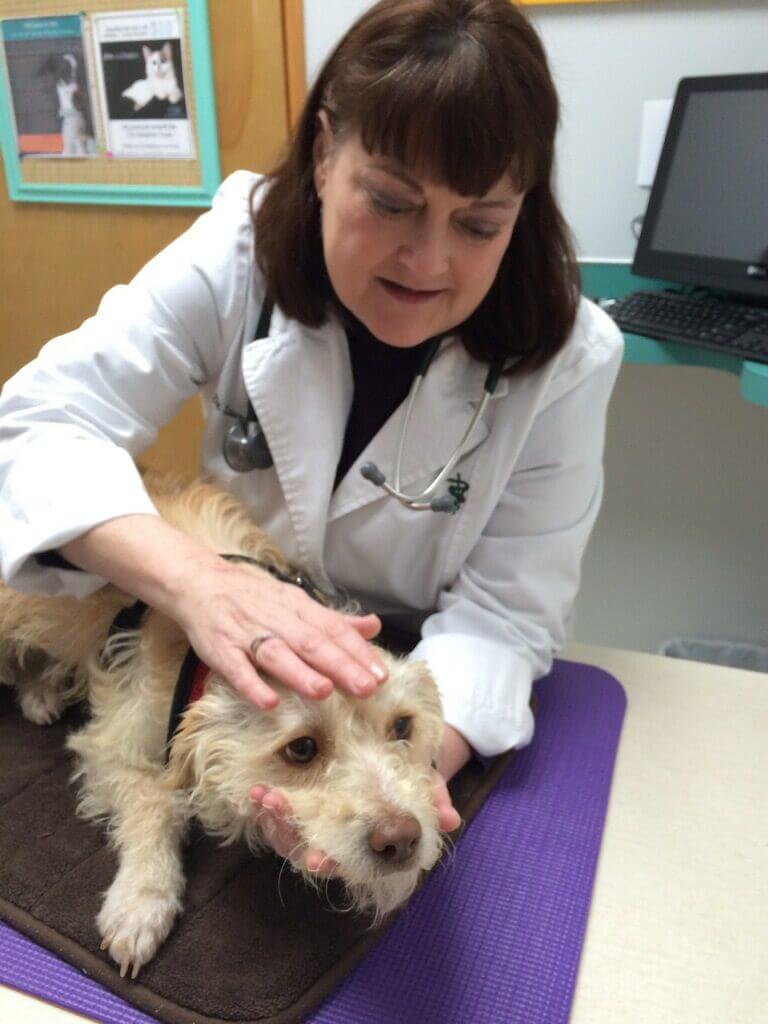
Fear free is a concept that has been recently introduced to the veterinary industry. It is something that was already being practiced by many in the field but not fully implemented by all staff in a practice as a standard. Hart Road Animal Hospital, the veterinary clinic that I work at recently went through staff training where the approach is implemented by all staff and starts at home with the clients. I will admit that I had some reservations about how this would actually improve stress levels, for the patient, staff and clients. After almost a year of implementing certain practices and techniques, I am seeing the difference.
Fear free starts at home. Educating clients is a big part of lowering stress levels for all. The clients must be accepting of the fact that stress and fear can be overcome when bringing their pet to the vet. Pre-visit pharmaceuticals are a wonderful way to take some of the edge off, some pets are also calmed by their favorite treat. Going slow, using gentle touch and adjusting to the pets needs are all used while the pet is in the clinic and aids in a fear free experience.
One particular case that really illustrates what this new techniques or approach is capable of is two canine patients that we have been working with for the last six months or so. The client has two younger dogs that suffer from severe anxiety and stress when coming to the clinic. Eli, a two-year-old Australian Shepherd mix, was the first to some into the clinic. He would bark at anybody that came near him, he would also urinate out of fear when approached. We were able to earn his trust through baby food and treats. After performing an exam we prescribed some trazodone, anti-anxiety medication, for future visits. We did have to use a muzzle for the exam for safety reasons. We only did what was absolutely necessary for the first visit and stopped when it seemed to be too overwhelming for him. The plan was baby steps with Eli. In between exams we had the client bring in Eli for “happy visits” where he got treats and loving. The next exam for him was much better, he was still apprehensive but calmed down after treats and gentle touch. By the third exam he was giving me kisses. Each exam, we did what he would let us do. If he got too worked up we would stop and try again another day. We had a plan in place prior to the exam and prioritized what needed to be done. Because of the success with Eli, the clients were open to the idea of starting at home to reduce stress and fear.
Then came Celty, the client’s other dog. She is a three year old mix breed that had extremely severe anxiety and fear. This patient had been labeled by other clinics as aggressive and one veterinarian even suggested euthanizing the pet. There is a difference between fear and aggression. Aggression that is unprovoked is different than aggression due to fear from being in an uncomfortable environment or situation. Prior to the client bringing in this patient, we made a plan with the client. The first appointment for Celty was very stressful and the client could not get Celty to come in the clinic, instead we went outside. Pre-visit medications were prescribed after the first visit. The next appointment we had the owner call us from the parking lot so we could greet her outside with treats and baby food. We were still unable to do what we needed, increasing the dose of the medication and added an additional medication became part of the plan. Each visit she was slowly getting familiar with the process and the staff, having the same staff member work with fearful patients also helps create a bond and trust. She was showing signs of improvement and eventually I was able to get her to take some baby food and let me touch her. We were still unable to get done what was needed but this was a break through. On the next visit we got the clients to meet us at the back door so it might not entice as much anxiety and I was finally able to handle her with a muzzle on. She let us do what needed to be done, she even took treats from me. I could feel her finally relax in my arms. We will do her exams outside and she will have to wear a basket muzzle and need pre-visit medications, but we are making progress.
I have fully accepted and seen the success that accompanies the introduction of fear free techniques. In addition to seeing a reduction in the overall stress level in the patients I see daily, it has reduced stress in staff as well as clients. It is amazing to see the shift into a fear free practice and watch the patients, clients and staff evolve and progress to much lower stress levels for all.
